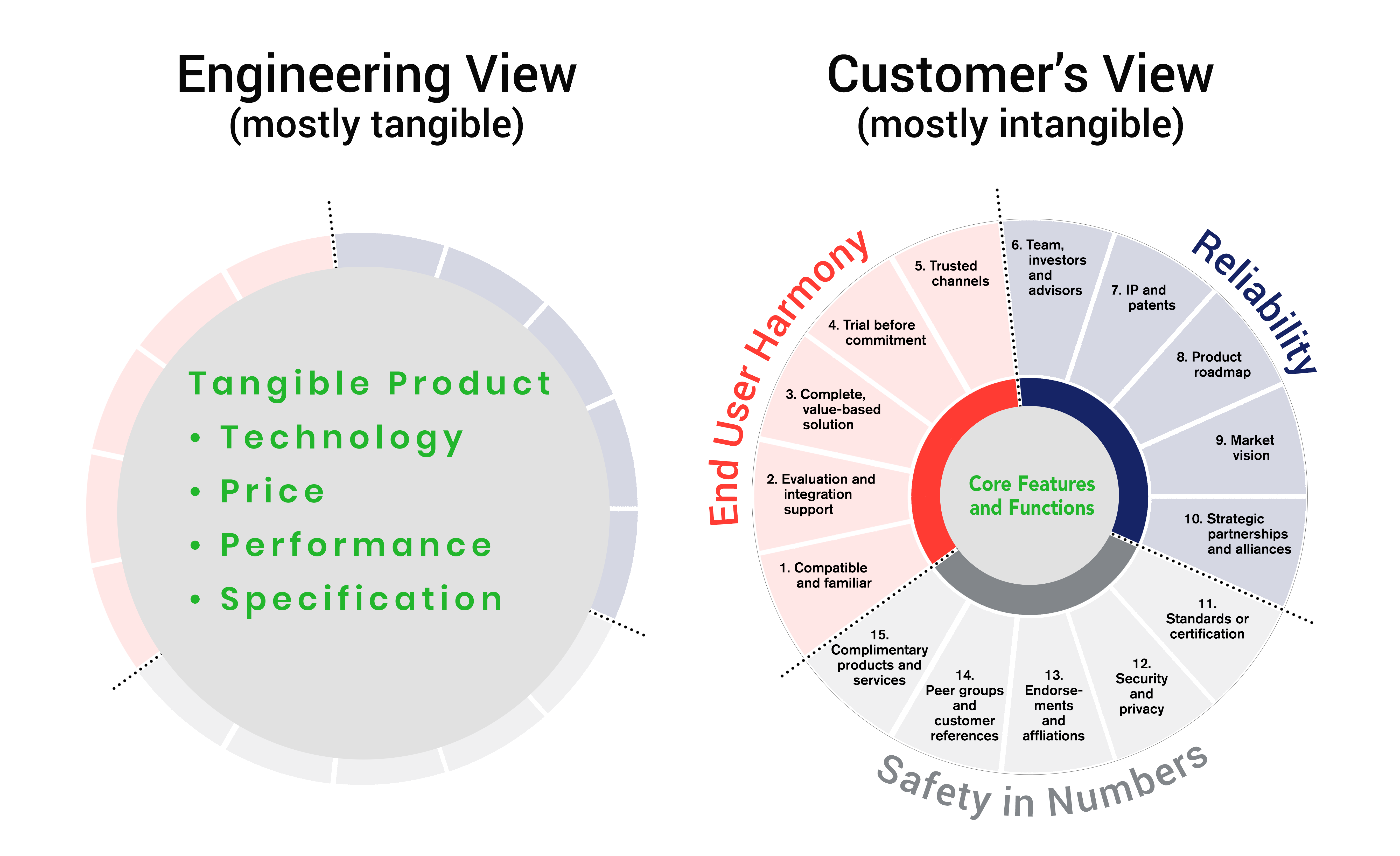The Role of Perception in Sales and Marketing
View your product from the perspective of the customer

The failure rate of new products and innovations has historically been very high because of a difference in product perception, between company insiders and customers.
In his book entitled “The Marketing Imagination” Ted Levitt, a professor at Harvard Business School drew attention to the fact that customers purchase more than the core product itself. Rather, their purchase is mostly based on product perception, which is the core product combined with complimentary attributes, the majority of which are intangible.
The “total product concept” was Levitt’s vision of how intangible elements could be added to a physical product, transforming it into an offering that was often perceived as more valuable than the physical attributes alone.

Following these insights provided by Ted Levitt, Regis McKenna, a Silicon Valley consultant, renamed the total product concept, calling it the “whole product.” McKenna defined the whole product as a generic or core product, augmented by everything that is needed for the customer to have an urgent reason to buy.
Levitt’s total product concept was then refined by Tom Peters. In a newsletter sent to his subscribers in 1986, Peters proposed an extension to the total product concept that describes the differences between insider and customer perceptions in three different types of industries – technology, service and retail.
Management Newsletter
In his article entitled “The Eye of the Beholder,” Peters proclaims that the winners in any industry come closer to seeing the world as their customers do. In technology-based companies, technical specifications favored by inside engineers, such as reliability and special features, are contrasted with factors that customers consider important such as product support, standards and company reputation.
Dynamic Product Perception
The concept of dynamic product perception (which describes the way products or ideas move through the innovation-adoption lifecycle) is a critical element in any discussion about intangible product attributes. This unexamined dimension of product adoption over time is the primary reason for the creation of an updated model called the Value Alignment Lifecycle™
Recognizing the sequence of innovation adoption along with the need for product reinvention, the Low Risk Recipe explains why when an organization brings a new product (or service) to market, the initial customers and users are intrigued with the tangible features of the product itself.
But as the product begins to move into the market, and as the markets develop, a change occurs in the perception of the product: intangibles assume an increasingly larger proportion of the perceived offering.
The Low Risk Recipe also emphasizes the need to add or enhance intangible product attributes over time as a product moves through the innovation-adoption lifecycle. This explains why pioneering new products lose their initial prominence because a new entrant is more successful in product positioning based on a more effective mix of intangibles. This can be the case even if the second product is not technically superior.


